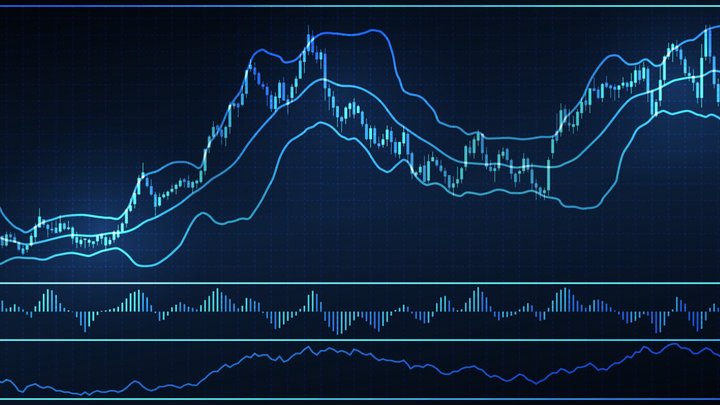
Understanding the dynamics of Material Stocks is important for developing sustainable resources management. This article discusses the composition and growth of Material Stocks and how their impact on resource demand is being felt by society. This article also addresses the effects of the circular economic model on human well-being, resource use, and the environment. It is possible to create sustainable systems that both reduce the use of resources and improve human well being by understanding the dynamics involved in material stock dynamics. Without a better understanding how material stocks work in socioeconomic metabolism, this knowledge will not be possible.
Materials stocks
Basic Materials stocks can offer investors a steady stream income. Companies in this sector produce essential raw materials for everything from steel and concrete to fertilizer and other products. Because these materials are essential to our economy, there can be supply problems that could lead to an increase in price. Rio Tinto, for instance is the most prominent mining company in the globe and produces the three major industrial metals. The company also produces a number of other essential metals.

Their composition
The composition and ideology of a SAB can help predict whether or not it promotes business goals. The present study examines whether SABs with a majority of industry members or equally divided are more likely to promote business interest. We also analyze the effect of ideological preferences and perceived business-friendlyness on SABs. We demonstrate that SABs with an industry-dominated membership are perceived to be more business-friendly.
Their growth
Strategic benefits can be gained from the growth of material stocks, since these companies create everyday products that we all use every day. Without basic materials, life would be impossible. It is therefore a smart strategy to invest in basic material stocks. These stocks include consumer staples, such as steel and lumber. These stocks are great for investors who want to grow their capital, but they can also be vulnerable to changes in economic conditions.
Their impact on resource demand
There are some concerns, even though the market trends overall are favorable for the material sector. China's rapid infrastructure investment growth and growing food demand are major concerns. The growth of emerging markets has put tremendous pressure on resource stocks. Rio Tinto, the world's biggest mining company, has warned investors that China’s infrastructure investment would hinder its growth as well as the raw material sector.
Stock-building Strategies
A new study compares different scenarios to limit stock-building within material stocks and analyzes future CO2 emission per unit of primary energies. According to the authors, a hypothetical convergence in material stock levels could have significant implications for future resource usage, particularly for global GHG emissions. Here are some objectives to help limit stock-building within material stocks.

They offer great potential for investment
Stocks are a great investment opportunity if you are looking at basic materials. It is not a fast-growing industry and it can still yield a good return if managed correctly. Do your research before you invest to increase your chances of making a profit. You can then diversify your portfolio using other stocks. This will likely lead to greater success. These are some of the material stocks that you should look at. Read on to find out more about these stocks.
FAQ
Can bonds be traded
They are, indeed! Bonds are traded on exchanges just as shares are. They have been for many years now.
They are different in that you can't buy bonds directly from the issuer. You will need to go through a broker to purchase them.
Because there are less intermediaries, buying bonds is easier. This also means that if you want to sell a bond, you must find someone willing to buy it from you.
There are several types of bonds. Some pay interest at regular intervals while others do not.
Some pay interest every quarter, while some pay it annually. These differences make it easy for bonds to be compared.
Bonds can be very helpful when you are looking to invest your money. Savings accounts earn 0.75 percent interest each year, for example. If you invested this same amount in a 10-year government bond, you would receive 12.5% interest per year.
If all of these investments were accumulated into a portfolio then the total return over ten year would be higher with the bond investment.
Stock marketable security or not?
Stock is an investment vehicle where you can buy shares of companies to make money. This is done via a brokerage firm where you purchase stocks and bonds.
You could also invest directly in individual stocks or even mutual funds. There are more mutual fund options than you might think.
These two approaches are different in that you make money differently. Direct investment earns you income from dividends that are paid by the company. Stock trading trades stocks and bonds to make a profit.
In both cases, ownership is purchased in a corporation or company. However, if you own a percentage of a company you are a shareholder. The company's earnings determine how much you get dividends.
Stock trading gives you the option to either short-sell (borrow a stock) and hope it drops below your cost or go long-term by holding onto the shares, hoping that their value increases.
There are three types to stock trades: calls, puts, and exchange traded funds. Call and Put options give you the ability to buy or trade a particular stock at a given price and within a defined time. ETFs, which track a collection of stocks, are very similar to mutual funds.
Stock trading is a popular way for investors to be involved in the growth of their company without having daily operations.
Stock trading can be a difficult job that requires extensive planning and study. However, it can bring you great returns if done well. If you decide to pursue this career path, you'll need to learn the basics of finance, accounting, and economics.
How are securities traded?
The stock market is an exchange where investors buy shares of companies for money. To raise capital, companies issue shares and then sell them to investors. Investors then resell these shares to the company when they want to gain from the company's assets.
Supply and Demand determine the price at which stocks trade in open market. When there are fewer buyers than sellers, the price goes up; when there are more buyers than sellers, the prices go down.
Stocks can be traded in two ways.
-
Directly from the company
-
Through a broker
What's the difference between a broker or a financial advisor?
Brokers are specialists in the sale and purchase of stocks and other securities for individuals and companies. They take care of all the paperwork involved in the transaction.
Financial advisors are experts in the field of personal finances. They use their expertise to help clients plan for retirement, prepare for emergencies, and achieve financial goals.
Financial advisors may be employed by banks, insurance companies, or other institutions. They may also work as independent professionals for a fee.
Consider taking courses in marketing, accounting, or finance to begin a career as a financial advisor. Also, you'll need to learn about different types of investments.
What is security on the stock market?
Security can be described as an asset that generates income. Most common security type is shares in companies.
A company may issue different types of securities such as bonds, preferred stocks, and common stocks.
The earnings per share (EPS), as well as the dividends that the company pays, determine the share's value.
If you purchase shares, you become a shareholder in the business. You also have a right to future profits. If the company pays you a dividend, it will pay you money.
You can sell your shares at any time.
Statistics
- Individuals with very limited financial experience are either terrified by horror stories of average investors losing 50% of their portfolio value or are beguiled by "hot tips" that bear the promise of huge rewards but seldom pay off. (investopedia.com)
- US resident who opens a new IBKR Pro individual or joint account receives a 0.25% rate reduction on margin loans. (nerdwallet.com)
- Our focus on Main Street investors reflects the fact that American households own $38 trillion worth of equities, more than 59 percent of the U.S. equity market either directly or indirectly through mutual funds, retirement accounts, and other investments. (sec.gov)
- The S&P 500 has grown about 10.5% per year since its establishment in the 1920s. (investopedia.com)
External Links
How To
How to make a trading program
A trading plan helps you manage your money effectively. It will help you determine how much money is available and your goals.
Before you create a trading program, consider your goals. It may be to earn more, save money, or reduce your spending. You may decide to invest in stocks or bonds if you're trying to save money. You could save some interest or purchase a home if you are earning it. Perhaps you would like to travel or buy something nicer if you have less money.
Once you have a clear idea of what you want with your money, it's time to determine how much you need to start. It depends on where you live, and whether or not you have debts. Consider how much income you have each month or week. Income is the sum of all your earnings after taxes.
Next, you need to make sure that you have enough money to cover your expenses. These expenses include rent, food, travel, bills and any other costs you may have to pay. These expenses add up to your monthly total.
Finally, figure out what amount you have left over at month's end. This is your net available income.
You're now able to determine how to spend your money the most efficiently.
To get started with a basic trading strategy, you can download one from the Internet. Ask an investor to teach you how to create one.
Here's an example spreadsheet that you can open with Microsoft Excel.
This will show all of your income and expenses so far. It includes your current bank account balance and your investment portfolio.
And here's a second example. This was created by a financial advisor.
It will allow you to calculate the risk that you are able to afford.
Don't attempt to predict the past. Instead, focus on using your money wisely today.